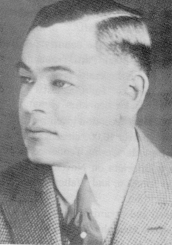ROBERT REED CHURCH, JR. (1885-1952)
 Robert R.
Church, Jr., a political leader of color in Memphis and the nation, was
born on October 26, 1885, at the family home, 384 South Lauderdale Street,
in Memphis. He was one of the two children of Robert R. and Anna (Wright)
Church. His sister was Annette E. Church. He was educated at Mrs. Julia
Hooks's kindergarten, by private tutors, and at parochial schools in Memphis.
Further education was obtained at Morgan Park Military Academy, Morgan
Park,Illinois, and Berlin and the Parkard School of Business, New York.
He completed his education by spending two years learning banking on Wall
Street.
Robert R.
Church, Jr., a political leader of color in Memphis and the nation, was
born on October 26, 1885, at the family home, 384 South Lauderdale Street,
in Memphis. He was one of the two children of Robert R. and Anna (Wright)
Church. His sister was Annette E. Church. He was educated at Mrs. Julia
Hooks's kindergarten, by private tutors, and at parochial schools in Memphis.
Further education was obtained at Morgan Park Military Academy, Morgan
Park,Illinois, and Berlin and the Parkard School of Business, New York.
He completed his education by spending two years learning banking on Wall
Street. Roberta Church and Ronald Walter